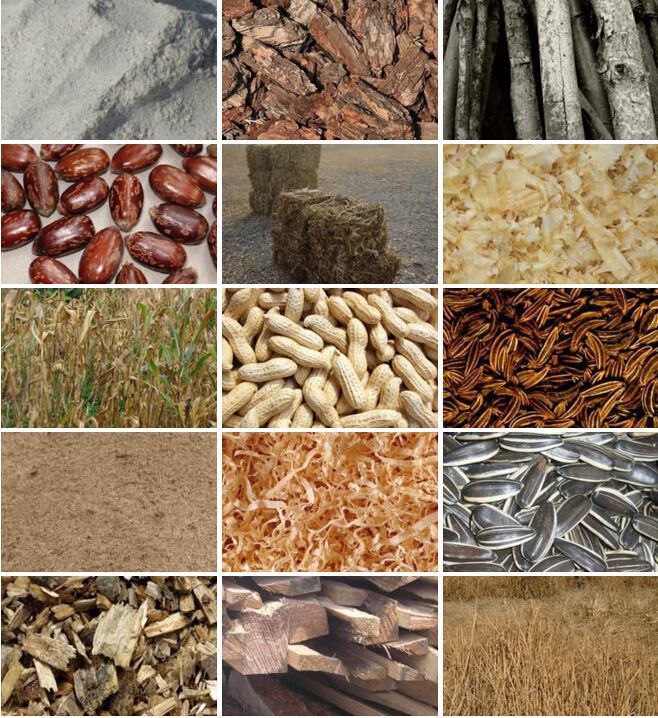Biomass briquette secrets
- 2024-06-12 15:42:00
- admin Original
- 131

What is biomass briquette?
How big is the biomass briquette market?
What are the raw materials for biomass briquette?
Is biomass briquette environmentally friendly?
What is the profit of biomass briquette?
What is the profit of biomass briquette?
How long is the shelf life of biomass briquettes?
Which countries import biomass briquettes?
What are the specifications of biomass briquettes?
What is the difference between charcoal and biomass lumps?
What is biomass briquette?
"Biomass briquette" is the common name for biomass solid briquette fuel, which refers to biomass fuel with a certain shape (granular, rod-shaped, block-shaped) made from agricultural and forestry residues such as herbaceous plants, woody plants and straw as the main raw materials through mechanical processing.
How big is the biomass briquette market?
Against the dual background of energy transformation and carbon neutrality goals, biomass energy is receiving more and more attention as a kind of renewable energy. According to the International Energy Agency, by 2025, global biomass energy utilization will increase by 40%.
The main uses of biomass solid briquette fuel include rural cooking and heating fuel, industrial boiler and kiln fuel, and power generation fuel. Among them, the industrial field has the highest consumption, accounting for more than 60%.
What are the raw materials for biomass briquette?
The raw materials for biomass briquette are mainly crop straw and forest residues. Crop straw refers to the straw of crops such as rice, wheat, and corn after harvest. Its advantages are wide sources and relatively low prices; forest residues refer to waste such as branches and trunks left after forestry felling. Its advantages are high calorific value and easy storage.

Is biomass briquette environmentally friendly?
The environmental performance of biomass briquette is mainly reflected in the following aspects: First, no harmful gas emissions such as sulfur dioxide and nitrogen oxides are produced during the combustion of biomass briquette; second, no chemical substances need to be added during the preparation of biomass briquette, so there is no secondary pollution problem; finally, the ash content of biomass briquette is low and has little impact on the environment.
What is the profit of biomass briquette?
The profit level of biomass briquette is affected by many factors, such as raw material cost, market demand, policy support, etc. Generally speaking, the production cost of biomass briquette is relatively low, while the market demand is relatively stable, so there is a certain profit margin. At the same time, the government's support for the biomass energy industry is also increasing, providing a strong policy guarantee for the development of biomass briquette.
How long is the shelf life of biomass briquettes?
The shelf life of biomass briquettes is usually about one year, depending on the storage conditions and transportation methods. If stored improperly or exposed to a humid environment for a long time, biomass briquettes may absorb moisture, mold, or spontaneously combust. Therefore, it is necessary to check whether the appearance is intact before use, and ensure that the storage environment is dry and ventilated.
Which countries import biomass briquettes?
At present, many countries in the world have imported biomass briquettes. For example, Japan is a typical country with scarce coal resources and a high degree of dependence on imported coal. In recent years, Japan has begun to actively seek alternative energy sources, including biomass energy. According to statistics, Japan's total coal imports in 2021 reached 210 million tons of standard coal. In addition, developed countries such as Europe and the United States are also actively promoting the development and utilization of biomass energy.
What are the specifications of biomass briquettes?

The specifications of biomass briquettes mainly include three forms: granular, rod-shaped and block-shaped. Among them, granules are the most common form on the market, with a diameter of about 6 mm; rods refer to cylindrical particles with larger diameters; and blocks are formed by pressing multiple small particles into a large particle. Different specifications are suitable for different application scenarios and needs.
What is the difference between charcoal and biomass lumps?
Charcoal is a solid fuel made by carbonizing wood at high temperatures, which has higher calorific value and stability than biomass lumps. However, its large-scale application is limited by factors such as the scarcity of wood resources and rising prices. As an emerging renewable energy product, biomass lumps have the advantages of a wide range of raw material sources, low cost, and good environmental performance, and are gradually gaining favor in the market.
| Contacts : | Chris Wang |
|---|---|
| Phone : | +8613633713237 |
| Email : | chris@ep-machine.com |
| Wechat : | +8613633713237 |
| Whatsapp : | +8613633713237 |
| SNS : |


|
